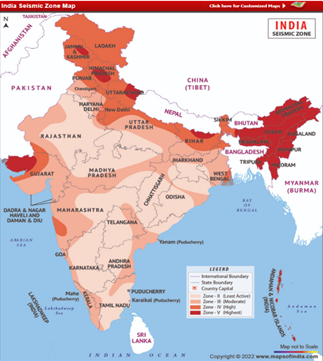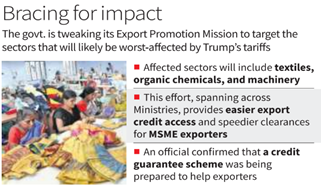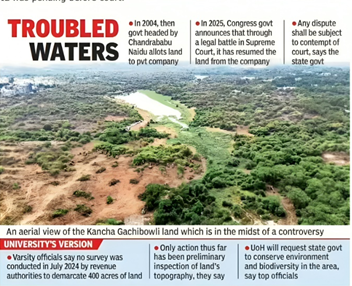

14th August 2025 (13 Topics)
Mains Issues
Context:
The 1950 Great Assam Earthquake, with a magnitude of 8.6, marks its 75th anniversary, prompting reassessment of seismic risks in the Eastern Himalayan region.
Earthquake
- Sudden shaking or trembling of the Earth's surface caused by release of energy from the Earth’s crust.
- Primary causes:
- Tectonic plate movement
- Volcanic activity
- Artificial triggers (e.g., mining explosions, reservoir-induced seismicity)
Causes of Earthquakes
- Tectonic:
- Movement along faults due to stress build-up at plate boundaries.
- Example: Himalayan earthquakes due to Indian Plate subducting under Eurasian Plate.
- Volcanic
- Triggered by magma movement beneath the Earth’s crust.
- Example: Icelandic volcanic quakes.
- Collapse
- Due to cavern collapse (mining, karst regions).
- Explosion
- Due to man-made explosions (nuclear tests, large industrial blasts).
- Reservoir-induced
- Due to filling of large dams (changes in pressure on crustal faults).
Seismic Terms
- Focus (Hypocentre): Actual point of energy release inside the crust.
- Epicentre: Point on the Earth’s surface directly above the focus.
- Seismic Waves:
- P-waves (Primary) – fastest, travel through solids & liquids.
- S-waves (Secondary) – slower, travel only through solids.
- Surface waves – cause most damage.
- Magnitude: Quantitative measure of energy released (Richter scale).
- Intensity: Qualitative measure of shaking & damage (MSK/Mercalli scale).
Earthquake Vulnerability in India
- 59% of land at moderate–severe seismic risk (MSK VII & above).
- Three main tectonic sub-regions:
- Himalayan belt – high magnitude (>8.0) potential.
- Alluvial plains – extensions of Himalayan seismicity.
- Peninsular India – intraplate earthquakes due to ancient faults.
Historic major earthquakes:
- Shillong (1897, M 8.7), Kangra (1905, M 8.0), Bihar–Nepal (1934, M 8.3), Assam–Tibet (1950, M 8.6).
Seismic Zoning in India (BIS Classification)
|
Zone |
MSK Intensity |
Risk Level |
Examples |
|
V |
IX & above |
Very High |
Kashmir valley, NE States, A&N Islands, Rann of Kutch |
|
IV |
VIII |
High |
Delhi, parts of J&K, Himachal, Uttarakhand, Sikkim |
|
III |
VII |
Moderate |
Kerala, Goa, parts of MP, Odisha, AP |
|
II |
VI or less |
Low |
Remaining parts of Rajasthan, MP, TN |
Impacts of Earthquakes
- Structural Damage – Building collapse, >90% casualties in India due to this.
- Surface Rupture & Ground Displacement – Disrupts roads, pipelines, railways.
- Tsunamis – Triggered by undersea earthquakes (esp. subduction zones).
- Liquefaction – Water-saturated soils lose strength during shaking.
- Fires – Due to ruptured fuel pipes & electrical failures.
- Livelihood Disruption – Economic slowdown, loss of employment.
Mitigation Strategies
- Structural: Earthquake-resistant building codes, retrofitting old structures.
- Planning: Avoid high-risk areas for settlements.
- Awareness: Drills, school safety programs.
- Preparedness: Emergency kits, evacuation routes.
- Technological: Seismic microzonation, early warning systems.
India’s Preparedness Initiatives
- National Centre for Seismology (NCS) – Monitors quakes via 115 observatories.
- National Earthquake Risk Mitigation Project (NERMP) – Focus on Zones IV & V.
- Seismic Microzonation – Mapping vulnerability of large cities.
- NDMA Campaigns – Public awareness & preparedness.
- BIS Building Codes – Guidelines for earthquake-resistant structures.
- Earthquake Disaster Risk Index – Prioritises high-risk cities for preparedness.
Challenges
- High Seismic Activity – Costly retrofitting in active zones.
- Unplanned Urbanisation – Violations of safety codes (Delhi: ~80% non-compliance).
- Tourism in Risk Zones – Increased exposure in Himalayan belt.
- Lax Regulation Enforcement – Weak inspection & penalties.
- Low Public Awareness – Poor safety literacy.
- Financial Constraints – Limited funds for seismic safety programs.
Way Forward
- Strict enforcement of building codes.
- Integrate earthquake risk into urban planning.
- Public education campaigns.
- Strengthen early warning systems.
- Increase R&D in seismic technology.
- Dedicated funds for retrofitting and infrastructure strengthening.


Mains Issues
Context:
The Prime Minister Shri Narendra Modi today hailed the milestone towards self-reliance in achieving 100 GW Solar PV Module Manufacturing Capacity and efforts towards popularising clean energy.
Potential of Solar Energy in India
- The National Institute of Solar Energy (NISE) estimates a theoretical potential of 748 GW, just 3% of wasteland is covered by PV modules.
- As of June 2025, India’s installed solar capacity is 9 GW, which is only ~14.8% of the total potential — indicating vast untapped resources.
- Achievement: 100 GW installed solar PV module manufacturing capacity enlisted under Approved List of Models and Manufacturers (ALMM).
- Previous Level (2014): Only 2.3 GW.
Current Status and Global Ranking
- India ranks 3rd globally in installed solar capacity and 4th in total renewable energy capacity.
- Total renewable energy capacity stands at 186.46 GW (excluding large hydro), while total non-fossil fuel capacity is 235.7 GW — about 49% of the total 476 GW installed capacity.
- This puts India nearly halfway towards its COP26 500 GW non-fossil capacity target for 2030, five years ahead of schedule.
Contribution to Climate and Energy Goals
- Solar expansion supports India’s Nationally Determined Contributions (NDCs) under the Paris Agreement — reducing emissions intensity by 45% from 2005 levels by 2030.
- India added 83 GW solar capacity in FY 2024–25, the highest annual addition ever, reflecting strong policy and investment push.
Factors Driving Growth
- Geographical Advantage: ~300 sunny days/year; 4–7 kWh/m²/day average solar irradiation.
- Government Programs:
- PM Surya Ghar: Muft Bijli Yojana – 10.09 lakh rooftop installations achieved by March 2025.
- PM-KUSUM Scheme – targets 30.8 GW in agricultural sector; decentralised solar deployment rising steadily.
- 100% FDI allowed in the sector; ISTS fee waiver for projects commissioned by June 2025 has boosted cross-state trade.
- International Leadership: Through International Solar Alliance and partnerships like the Indo-German Solar Energy Partnership (IGSP).
Persistent Challenges
- Land Use: Solar requires ~300× more land than nuclear (Economic Survey 2023–24). Large-scale projects risk conflict with agriculture and biodiversity.
- Grid Integration & Storage: Integrating 110+ GW solar with variable generation is straining transmission infrastructure.
- Domestic Manufacturing Gaps: Despite PLI schemes, India still imports significant quantities of modules, cells, and inverters.
- Environmental Concerns: Mining for Lithium, Cobalt, and rare earths generates ~15 tonnes CO? per tonne of mineral and consumes high water.
Way Forward
- Grid Modernisation: Deploy smart grids and microgrids to manage peak load and variable generation.
- Land Efficiency: Promote agrivoltaics and floating solar to reduce land conflicts.
- Domestic Supply Chains: Strengthen R&D and manufacturing through PLI and Make in India to reduce import dependence.
- Circular Economy: Establish solar panel recycling infrastructure to recover critical minerals before large-scale panel retirement in the 2040s.
- Hybrid & Tech Integration: Combine solar with wind, storage, AI, and IoT for optimised energy generation and consumption.


Prelims Articles
Context:
Thousands of forest rights titles in at least three districts of Chhattisgarh have reportedly disappeared from official records over the past 17 months, raising concerns over data accuracy and implementation of the Forest Rights Act, 2006.
Forest Rights Act (FRA), 2006:
- Enacted to recognise and vest forest rights and occupation in forest land to Scheduled Tribes (STs) and Other Traditional Forest Dwellers (OTFDs).
- Covers Individual Forest Rights (IFR) for cultivation and habitation, and Community Forest Resource Rights (CFRR) for using, managing, and conserving forests.
- Rights are heritable but not alienable or transferable.
Current Discrepancy in Chhattisgarh
- Data Reduction:
- Bastar IFR titles fell from 37,958 (Jan 2024) to 35,180 (May 2025).
- Rajnandgaon CFRR titles reduced from 40 to 20 in one month.
- Bijapur CFRR titles dropped from 299 to 297 within a month.
- Officials attribute changes to “miscommunication and reporting errors” between Gram Sabha, Sub-divisional, and District levels.
- Experts note no legal provision exists to withdraw granted FRA titles.
Chhattisgarh’s Role in FRA Implementation
- As of May 2025, Chhattisgarh accounts for over 43% of total forest area under FRA titles in India.
- FRA not implemented in Raipur, Durg, and Bemetara
- In districts recently declared free of Naxalism, FRA progress remains slow.


Prelims Articles
Context:
To commemorate the 5th Anniversary of the National Education Policy (NEP) 2020, the Government of India conducted a week-long nationwide campaign (from 29 July 2025) for assessment and distribution of assistive devices to Children with Special Needs (CwSN) under Samagra Shiksha.
Samagra Shiksha Scheme &its to CwSN Initiative
Scheme Overview
- Launch Year: 2018
- Ministry: Ministry of Education
- Nature: Centrally Sponsored Scheme (CSS)
- Coverage: From pre-school to Class XII in Government and aided schools.
- Scope:
- Covers 16 million schools, 156+ million students, 5.7 million teachers.
- Funding ratio: 60:40 (Centre:States) and 90:10 for NE & Himalayan States, 100% for UTs without legislature.
- Integration: Merged SSA, RMSA, Teacher Education into one holistic programme.
Core Objectives
- Equitable & Inclusive Education – includes CwSN integration.
- Improved Quality – from foundational literacy to secondary level skills.
- Universal Access & Retention – targeting both in-school and out-of-school children.
- Teacher Capacity Building – continuous professional development.
Key Components of CwSN Mega Camps
- Inclusive Education (IE):
- Early identification & assessment of Children with Special Needs (CwSN).
- Provision for up to 4 camps per block/year (?10,000 per camp).
- Collaboration with ADIP Scheme (Assistive Devices for CwSN).
- Direct Benefit Transfer (DBT): Delivery of entitlements like textbooks, uniforms, transport allowances directly to students.
- Holistic Support: Infrastructure adaptation, special educators, assistive devices, inclusive pedagogy.
|
Samagra Shiksha 2.0:
|


Prelims Articles
Context:
The Union Government is considering revising the parental income eligibility limit for post and pre-matric scholarships for Scheduled Castes, Scheduled Tribes, OBCs, EBCs, and Denotified Tribes from ?2.5 lakh to ?4.5 lakh ahead of the FY 2026–27 to FY 2030–31 financial cycle.
About the Schemes
- Type: Centrally Sponsored Schemes (CSS) with Union–State funding ratio:
- General States: 60:40
- North Eastern & Special Category States: 90:10
- Administered by:
- Social Justice & Empowerment Ministry – for SCs, OBCs, EBCs, and DNTs.
- Tribal Affairs Ministry – for STs.
Budget Allocations (FY 2025–26)
- Social Justice Department: 66.7% of ?13,611 crore for centrally sponsored scholarships.
- Tribal Affairs Ministry: 18.6% of ?14,925.81 crore for centrally sponsored scholarships.
Beneficiary Trends (2020–21 to 2024–25)
- SC Pre-Matric: ? 30.63%
- SC Post-Matric: ? 4.22%
- OBC/EBC/DNT Pre-Matric: ? from 58.62 lakh (2021–22) to 20.25 lakh (2023–24)
- OBC/EBC/DNT Post-Matric: ? from 43.34 lakh to 38.42 lakh
- ST Pre-Matric: ? 4.63 lakh
- ST Post-Matric: ? 3.52 lakh
House Panel Recommendations
- Increase parental income limit – to ?4.5 lakh (proposed for STs; under discussion for SCs, OBCs, DNTs).
- Extend OBC pre-matric scholarships from Class V onwards instead of only IX–X.
- Observed that low income limit excludes deserving candidates


Prelims Articles
Context:
The Government of India is modifying its Export Promotion Mission to provide targeted support to MSMEs in sectors adversely affected by increased U.S. tariffs, including apparel, textiles, shrimp, organic chemicals, and machinery.
Export Promotion Mission (EPM)
- Announced in Union Budget 2025–26 with an allocation of ?2,250 crore for FY 2025–26.
- Objectives:
- Facilitate easy access to export credit.
- Provide cross-border factoring support.
- Support MSMEs in tackling non-tariff measures in overseas markets.
- Current modification aims for sector-specific intervention to counter U.S. tariff hikes.
Targeted Sectors:
- Apparel and Textiles.
- Shrimp exports.
- Organic chemicals.
- Machinery and mechanical appliances.
Planned Measures under Tweaked Mission
- Credit Guarantees for MSME exporters, with coverage up to ?100 crore loans.
- Expedited clearances to reduce export delays.
- Potential export incentives under consideration.
- Coordination between Ministries of Commerce, Finance, MSME, Textiles, and Fisheries.
Significance for MSMEs
- MSMEs are highly vulnerable to tariff shocks due to limited financial reserves.
- Sector-specific relief could enhance global competitiveness and market diversification


Prelims Articles
Context:
The RBI-appointed committee has submitted its Framework for Responsible and Ethical Enablement of Artificial Intelligence (FREE-AI) report, recommending 26 measures under six strategic pillars to enable innovation and mitigate AI-related risks in the financial sector.
Committee Objective:
- To develop guidelines for the ethical, responsible, and innovative adoption of AI in the Indian financial sector.
Guiding Principles – “7 Sutras”:
- Trust is the Foundation
- People First
- Innovation over Restraint
- Fairness and Equity
- Accountability
- Understandable by Design
- Safety, Resilience, and Sustainability
Strategic Pillars:
- Innovation Enablement: Infrastructure, Policy, and Capacity
- Risk Mitigation: Governance, Protection, and Assurance
Key Recommendations:
- Establishment of shared infrastructure to democratise access to data and computing resources.
- Creation of an AI Innovation Sandbox.
- Development of indigenous, sector-specific AI models for finance.
- Formulation of board-approved AI policies by Regulated Entities (REs).
- Integration of AI aspects in product approval processes and consumer protection frameworks.
- Strengthening cybersecurity and AI-related incident reporting


Prelims Articles
Context:
The Supreme Court directed the Telangana government to submit a concrete proposal for restoring the degraded Kancha Gachibowli forest, which was cleared for an IT project, as a condition for removing adverse remarks against the State.
Case Background
- Over 100 acres of the Kancha Gachibowli forest, adjacent to the University of Hyderabad, were cleared for an IT infrastructure project.
- This sparked protests from environmental groups and concerns regarding violation of forest conservation norms.
Supreme Court’s Position
- Chief Justice of India emphasised balancing development with environmental protection.
- Directed Telangana to restore the forest area through replantation measures.
- Court warned earlier (May 2025) that failure to restore would lead to imprisonment of the Chief Secretary and senior officials.
- Linked compliance with removal of prior adverse observations by the court.
Legal and Environmental Significance
- Forest Conservation Act, 1980 – Regulates diversion of forest land for non-forest purposes and requires prior approval from the Central Government.
- Environment Protection Act, 1986 – Provides a framework for protecting and improving the quality of the environment.
- Supreme Court Order of March 4, 2025 – Barred any activity leading to depletion of forest cover across India.
- Restoration of forest land is consistent with the principle of sustainable development and public trust doctrine.
|
Kancha Gachibowli Forest Location & Ecology
|


Prelims Articles
Context:
IN-SPACe has selected the PixxelSpace India-led consortium to design, build, and operate India’s first fully indigenous commercial Earth Observation satellite constellation under the PPP model.
IN-SPACe:
- The Indian National Space Promotion and Authorisation Centre functions under the Department of Space as a single-window nodal agency to promote, authorise, and regulate private sector participation in the Indian space programme.
PixxelSpace India-led Consortium:
- Includes Piersight Space, Satsure Analytics India, and Dhruva Space.
Project Details:
- Investment: ?1,200+ crore over five years by the private consortium.
- Scale: 12 advanced EO satellites.
- Model: Public-Private Partnership (PPP).
Significance:
- First time in India’s space history that a fully indigenous commercial EO constellation is being developed and operated by a private consortium.
- Reduces India’s reliance on foreign EO data, enhancing data sovereignty.
- Strengthens India’s space-based applications for climate change monitoring, disaster management, agriculture, marine surveillance, national security, and urban planning.
- Enhances geospatial intelligence capability and contributes to the global EO market.
Earth Observation (EO) Satellites:
- Provide high-resolution imagery and Analysis Ready Data (ARD) along with Value-Added Services (VAS) for real-time decision-making.
Policy Backdrop:
Aligns with India’s Space Sector reforms initiated in 2020, aimed at expanding private sector participation.

Prelims Articles
Context:
The 4th edition of Har GharTiranga was conducted in 2025, timed with the 79th Independence Day, running from 2nd to 15th August. The campaign is part of Azadi Ka Amrit Mahotsav, aiming to cultivate patriotism by encouraging every citizen to hoist the national flag at their home
Background & Launch
- The Har GharTiranga (HGT) campaign was launched in 2022 under the umbrella of Azadi Ka Amrit Mahotsav (AKAM) to mark 75 years of India’s independence.
- It encourages citizens to hoist the National Flag (Tiranga) at their homes, workplaces, and institutions as a symbol of unity and patriotism.
Objectives & Significance
- Instilling Patriotism: Promotes emotional connection with the national flag and fosters a sense of national pride.
- Nationwide Participation: Aims to convert symbolic flag-hoisting into a mass movement, strengthening the unity-in-diversity ethos.
- Awareness of National Symbols: Educates people about the history, significance, and protocols associated with the Tiranga.
2025 Edition (4th Edition)
- The 4th edition of Har GharTiranga was conducted in 2025, timed with the 79th Independence Day, running from 2nd to 15th August.
- The campaign is part of Azadi Ka Amrit Mahotsav, aiming to cultivate patriotism by encouraging every citizen to hoist the national flag at their homeDates: 9th–15th August 2024, in sync with Independence Day celebrations.
- Activities: Tiranga Concerts, NukkadNataks (street plays), exhibitions showcasing the evolution of the Indian flag, and cultural programs across states.
- Focus on digital participation through social media campaigns and virtual flag-hoisting initiatives.
Legal & Constitutional Aspects
- Governed by the Flag Code of India, 2002, which allows citizens to hoist the national flag on any day, provided dignity and respect are maintained.
- The 2022 amendment allowed flags made of polyester along with cotton, wool, silk, and khadi, and permitted 24x7 display.
|
Flag Code of India, 2002 Legal Framework
Key Amendments
Display and Usage Guidelines
|


Editorials
Context:
Debate on increasing governmental control over universities has raised concerns about academic freedom, research autonomy, and democratic discourse in higher education.
Importance of Academic Freedom
- Knowledge Creation and Critical Thinking
- Academic freedom enables questioning of established ideas, fostering innovation and intellectual progress.
- Students must have the liberty to ask questions, and faculty must have independence to challenge prevailing knowledge.
- Institutional Autonomy in Teaching and Research
- Universities should decide curricula, teaching methods, and research priorities without external interference.
- Freedom to invite diverse speakers and hold open debates enriches learning and promotes social and economic progress.
- Role in Society, Economy, and Polity
- Universities act as sources of scientific, technological, and policy innovation.
- Faculty serve as public intellectuals, contributing to democratic accountability through critical evaluation of governance.
Present Challenges in India
- State Control Over Curriculum and Research
- Curricula and prescribed readings are often regulated externally, limiting academic diversity.
- Promising research, especially in social sciences and humanities, faces suppression if it diverges from mainstream narratives.
- Restrictions on Expression and Academic Mobility
- Faculty and students face curbs on discussions perceived as critical of the ruling government.
- Travel for conferences abroad may require undertakings restricting participation in “anti-government activities.”
- Impact on Private Universities
- Governmental influence extends to private universities through regulatory and financial pressure.
- Fear of antagonising authorities leads to self-censorship by institutional promoters.
Global Comparisons and Need for Reform
- International Patterns of Academic Restriction
- Academic freedoms are curbed in democracies like Hungary and Türkiye, and in authoritarian regimes like China and Russia.
- In the United States, research funding cuts under Trump administration threatened traditional academic autonomy.
- Causes of Governmental Control
- Governments seek to suppress dissent, enforce ideological conformity, and control narratives.
- Dependence on state funding makes universities vulnerable to political influence.
- Path to Reform and Autonomy
- Autonomy must be administrative, financial, and academic, backed by transparent accountability systems.
- Regulatory reforms, not centralized interventions, are essential to encourage diversity, creativity, and academic excellence.
Practice Question:
"Academic freedom is indispensable for fostering innovation, critical inquiry, and democratic accountability. Critically examine the challenges to academic autonomy in India and suggest measures for its protection in the context of global trends." (250 words)


Editorials
Context:
As India marks its 79th year of Independence, the focus is on translating sovereignty into economic freedom by fostering free enterprise across all sectors.
The Need for a Bold Economic Shift
- From Sovereignty to Economic Freedom
- While political independence has been achieved, true liberation requires economic empowerment through entrepreneurship and innovation.
- Government control over key sectors must give way to individual initiative and private enterprise.
- Role of Private Sector and Infrastructure
- Sectors like education, industry, and infrastructure need reduced state interference for sustainable growth.
- Private participation in nation-building—roads, bridges, and civic infrastructure—is essential for inclusive development.
- Breaking Bureaucratic Barriers
- Outdated taxation laws and rigid regulations hinder innovation and business growth.
- Radical reforms and trust in private initiative are necessary to replace bureaucratic micromanagement.
Building a Culture of Independent Thinking
- Education for Free and Conscious Citizens
- The focus of education should be on nurturing seekers, not believers, and producing free-thinking individuals.
- Over-regulated, doctrinaire systems stifle creativity and critical reasoning.
- Innovation as the Growth Engine
- Societal progress depends on enabling disruptive innovation without fear of excessive regulation.
- India must seize opportunities in emerging sectors to compete globally.
- Leveraging Information and Technology
- Digital and technological strengths position India as a rising global player.
- Protection from excessive external dependence is key to safeguarding national interests.
Reforming Governance to Enable Enterprise
- Reducing State Overreach
- Government’s role should shift from being a controller to being a facilitator of private enterprise.
- Excessive interference in economic activities undermines both efficiency and innovation.
- Empowering Citizens through Economic Freedom
- Economic liberty enhances self-reliance, personal responsibility, and societal resilience.
- Citizens with autonomy contribute more effectively to national growth.
- Harnessing Demographic Advantage
- India’s young population must be empowered before they lose their creative potential.
- Delays in reform risk missing the demographic dividend and future economic opportunities.
Practice Question:
"Economic freedom is as essential to a nation’s progress as political sovereignty. Critically examine the role of free enterprise in unlocking India’s growth potential, highlighting the reforms needed to reduce state overreach." (250 words)


Editorials
The growing role of drones in modern warfare, highlighted during Operation Sindoor, has intensified India’s focus on enhancing its UAV capabilities and positioning itself as a regional supplier.
Evolution of Drone Warfare and India’s Current Capability Gaps
- Shift in Role of UAVs and UCAVs
- The 2020 Nagorno-Karabakh conflict and Operation Sindoor demonstrated drones’ transition from reconnaissance to precision strike platforms.
- Modern conflicts demand UAVs capable of both surveillance and offensive operations across varied terrains.
- India’s Present Drone Inventory
- India operates systems like the Israeli Harop (loitering munition) and Heron (medium-altitude surveillance), along with older imports and some indigenous models.
- Current platforms do not fully meet requirements for high-altitude, long-range precision strikes and maritime domain awareness.
- Procurement and Strategic Partnerships
- In 2024, India finalised the acquisition of 31 MQ-9B Reapers from the U.S., partly addressing surveillance and strike needs.
- Future strategy is shifting towards sourcing components (e.g., power plants, payloads) rather than outright U.S. purchases.
Global Drone Market Trends and Strategic Constraints
- S. Decline in UAV Export Competitiveness
- Adherence to the Missile Technology Control Regime (MTCR) limited U.S. drone exports, with only 8% global market share in 2023.
- Reforms are underway, but the U.S. lags behind China and Türkiye in UAV exports.
- India’s Limited Supplier Options
- Given strained relations with China and Türkiye, India relies mainly on Israel and European suppliers.
- Israel’s focus on West Asia limits its availability for Indo-Pacific supply commitments.
- Indo-Pacific Demand Drivers
- Countries like Vietnam, the Philippines, Taiwan, South Korea, and Japan seek maritime domain awareness to counter China’s “gray-zone” tactics.
- High-altitude and maritime UAVs are critical for sovereignty protection and resource security.
India’s Opportunity in the Indo-Pacific Drone Ecosystem
- Filling the Strategic Vacuum
- The U.S. market gap in the Indo-Pacific presents an opening for India to emerge as a key UAV supplier.
- Exporting to regional partners would enhance India’s strategic influence and trade relations.
- Strengthening Domestic UAV Ecosystem
- Leveraging joint production ventures, particularly with Israel, can help overcome domestic technological and bureaucratic constraints.
- A balanced approach of indigenous manufacturing and selective technology imports is essential.
- Promoting Regional Collaboration
- Technology-sharing with like-minded Indo-Pacific nations would foster trust and mutual defence capabilities.
- Collaborative UAV development can address shared security needs while reducing dependency on adversarial suppliers.
Practice Question:
"In the context of shifting global UAV dynamics, critically examine India’s strategic challenges and opportunities in developing indigenous drone capabilities and emerging as a supplier in the Indo-Pacific region." (250 words)




